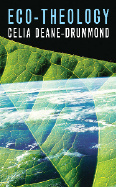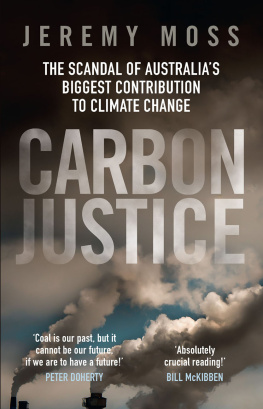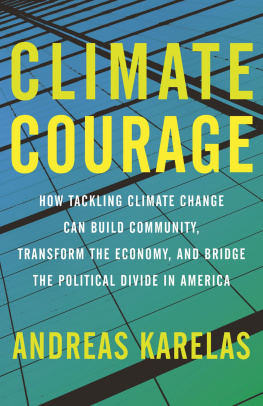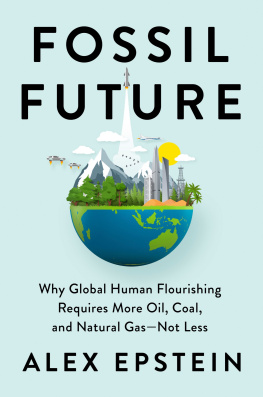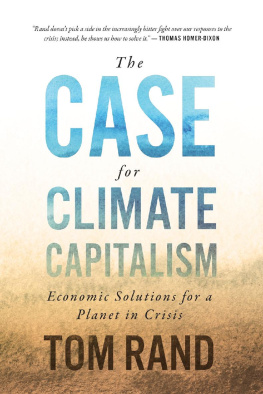Contents
List of Figures
List of Tables
Guide
Pagebreaks of the print version
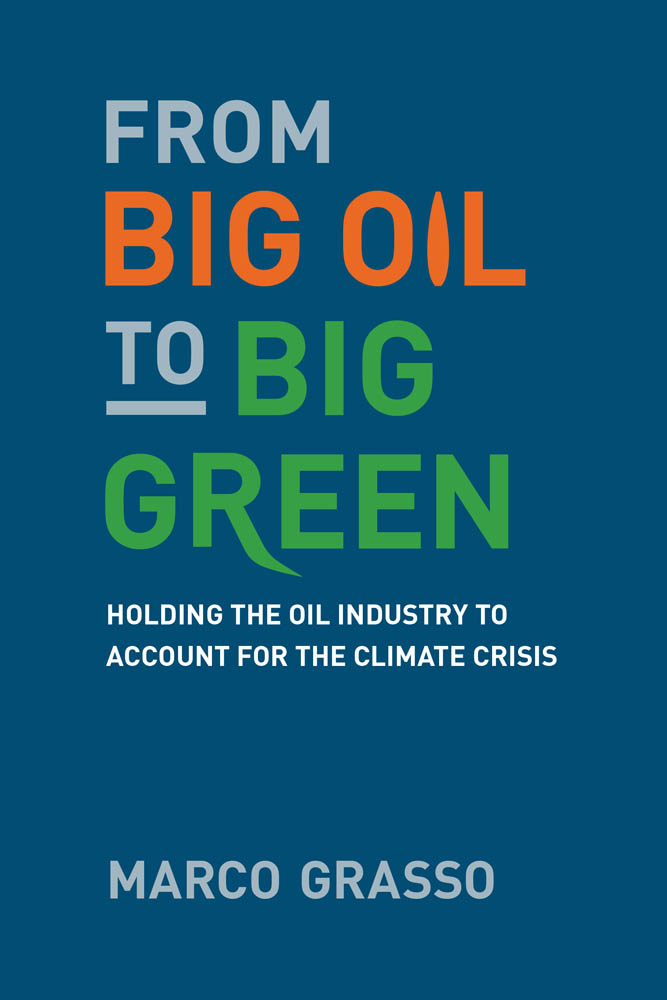
FROM BIG OIL TO BIG GREEN
Holding the Oil Industry to Account for the Climate Crisis
MARCO GRASSO
The MIT Press
Cambridge, Massachusetts
London, England
2022 Massachusetts Institute of Technology
This work is subject to a Creative Commons CC-BY-NC-ND license. Subject to such license, all rights are reserved.

The MIT Press would like to thank the anonymous peer reviewers who provided comments on drafts of this book. The generous work of academic experts is essential for establishing the authority and quality of our publications. We acknowledge with gratitude the contributions of these otherwise uncredited readers.
Library of Congress Cataloging-in-Publication Data
Names: Grasso, Marco, author.
Title: From big oil to big green : holding the oil industry to account for the climate crisis / Marco Grasso.
Description: Cambridge, Massachusetts : The MIT Press, [2022] | Includes bibliographical references and index.
Identifiers: LCCN 2021035152 | ISBN 9780262543743 (paperback)
Subjects: LCSH: Climatic changes. | Oil industries.
Classification: LCC QC902.8 .G73 2022 | DDC 363.738/26dc23/eng/20211014
LC record available at https://lccn.loc.gov/2021035152
d_r0
Let me give you a definition of ethics: it is good to maintain and further life, it is bad to damage and destroy life.
Albert Schweitzer
Power concedes nothing without a demand. It never did and it never will.
Frederick Douglass
Written laws are like spiders webs; they will catch, it is true, the weak and the poor, but would be torn in pieces by the rich and powerful.
Anacharsis
CONTENTS
List of Figures
Exxons investments in property, plant, and equipment (petroleum and natural gas, $ billion). aUpstream investments include oil and gas exploration and production; bdownstream investments include oil and gas refining and marketing.- Source: Exxon 10K Annual Reports to the US Securities and Exchange Commission (various years). http://ir.exxonmobil.com/phoenix.zhtml?c=115024&p=irol-sec.
Tasks for averting climate change.- Source: Author.
Proposed Fund for Oil Rectification (FOR).- Source: Author.
List of Tables
Largest national oil companies ownership ($ billion)
Oil and gas companies by revenues, 2019 ($ billion)
Oil and gas companies annual production, 2019
Oil and gas companies reserves, 2019
Reserve to production ratio,a 2019 (years)
Oil and gas companies scope 1 + 3 greenhouse gas emissions 19882015, GtCO2e and percent of global industrial emissions 19882015
The morally relevant facts
Parameters for mapping Big Oil
Big Oils level of requirement to the duties of reparation and decarbonization
Top 20 oil and gas companies scope 1 + 3 greenhouse gas emissions 19902015, GtCO2e and percentage of contribution to harm
Top 20 oil and gas companies harm measured through the social cost of carbon (SCC = $90 per tonne)
Top 20 oil and gas companies 20202050 disgorgement (all figures in $ billion)
Top 20 oil and gas companies scope 1 + 3 greenhouse gas emissions 2015 and target emissions in 2050 (2050: 70% reduction compared to 2015), MtCO2e
Top 20 oil and gas companies scope 3 greenhouse gas target emissions in 2050, MtCO2e
IOCs scope 3 greenhouse gas emissions levels in 2015 and 2050 (30% of 2015) and emissions to be abated in the period 20152050, MtCO2e
NOCs grouping in relation to the duty of decarbonization
ACKNOWLEDGMENTS
I thank Sabina Zambon for the countless unvaluable insights into the arguments of the book; her painstaking editorial, linguistic, and fact-checking work; her efforts to untangle my academic jargon; and her occasional additions that provide overall color. Without her, this book would have been very different and indeed much less interesting and enjoyable.
I thank the Polish Institute of Advanced Studies (PIASt) of the Polish Academy of Sciences for having provided me with the meansincluding a cozy apartment along the Vistulaand the much-appreciated peace and quiet to finish this book over the course of a difficult locked-down period.
I thank Richard Heede for having helped me collate the Big Oil figures.
I thank Beth Clevenger and the MIT Press team for their continuous support throughout the project.
INTRODUCTION
The word crisis has its roots in ancient Greek, krisis, meaning the tipping point in a predicament, the moment when paths diverge, only one leading to recovery. This is a concept that the COVID-19 pandemic, which exploded in early 2020, has made us chillingly familiar with. A world in which carbon emissions are either brought under control or allowed to flourish unabated is also at just such a path, and science, the media, and politicsnot to mention social networksabound in hellish portrayals of possible future scenarios.
And like the virus that threw the world into a crisis at the beginning of the 2020s, emissions possess no passports and respect no political or natural borders. Both COVID-19 and carbon emissions bring rise not only to a senseless loss of lives but also to colossal expenditure in economic terms.
This book will not dwell on the pandemic, limiting its reflection on it, in the concluding chapter, to the implications the COVID-19 crisis has had and will have on the oil industry; however, a consideration of the shared patterns of inequalities deeply embedded in our society is conducive to underlining the moral perspective behind this books premise. A moral perspective is a fundamental requirement for ensuring a broad spectrum of backing for enduring strategies, policies, and norms to be implemented in collaboration with the main polluter so as to achieve the kind of effective long-termism required that differentiates a marathon from a sprint.
Oil permeates our lives in endless ways. It is everywhere, in clothing, in furniture, in computers and smartphones, in those minuscule granules in toothpaste that give us that extra-fresh feel, in the gloss we smear on our lips, in the medicines that cure our ills; it is the global economys primary energy and fuel source. Oil also lubricates the global supply chains that bring us Earths bounty. Even one of the simplest consumer products imaginable, a plain white cotton T-shirta mainstay of everyones wardrobe, from hipster Brooklynites to the humble immigrant tomato pickers in southern Europe, seemingly oil-freeis a masterful triumph of global cooperation and coordination. And it is brought to us by none other than Big Oil itself. Cotton is planted, cultivated, and harvested in Mississippi with oil-based chemicals and machinery; then it is sent through oil-powered shipping vectors to spinning factories in Indonesia; the spooled yarn travels on oil-propelled vessels to garment factories in South Asia and Latin America. Finally, the global shipping industry that is the very foundation of the entire global consumer economyit takes only fifteen supervessels powered by dirty high-sulfur heavy fuel oil to emit as much sulfur as all the worlds cars and as much greenhouse gas as 760 million carsbrings the unassuming cotton T-shirt to a store near you.


